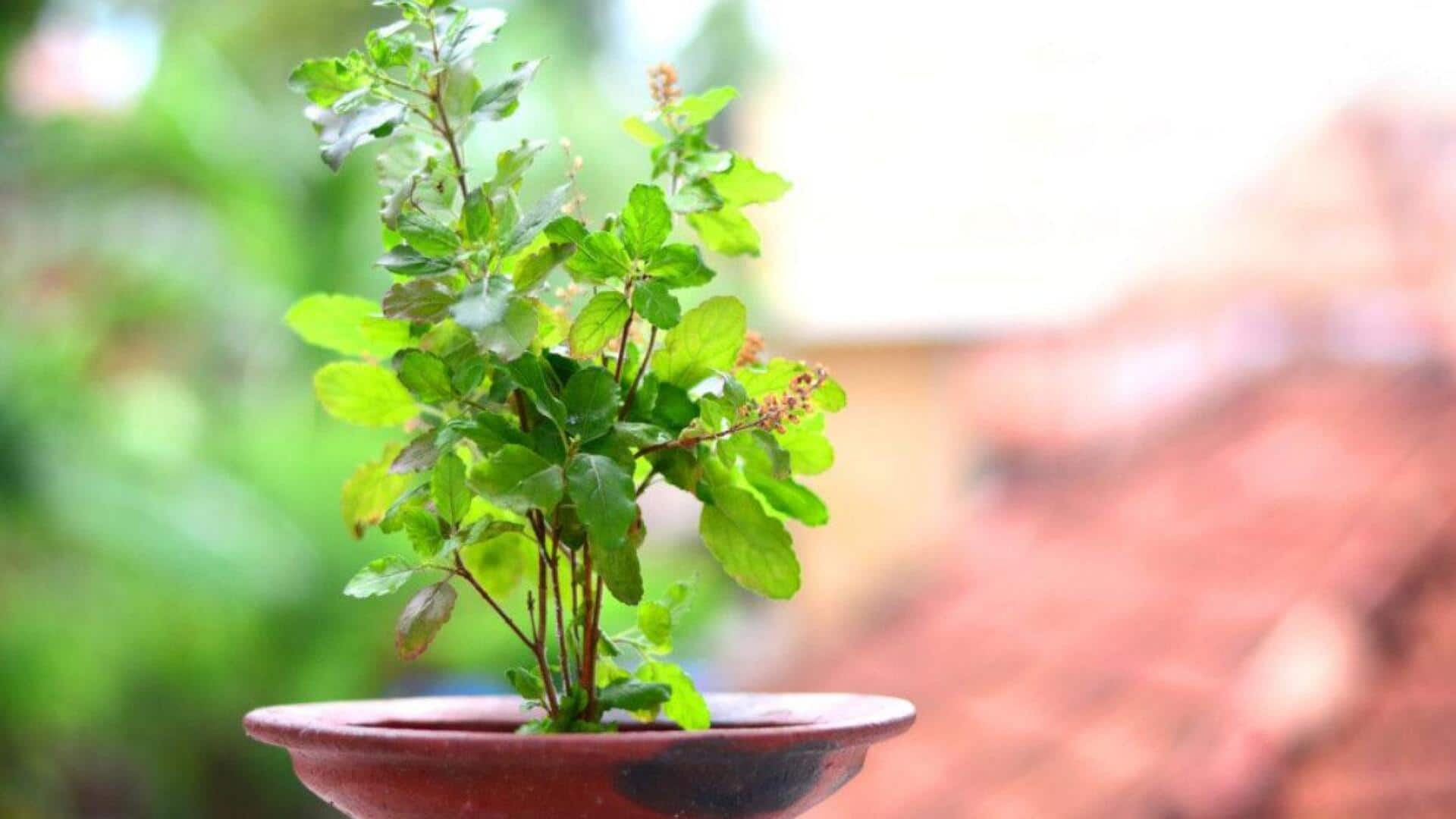
How to grow tulsi on your windowsill
What's the story
Growing tulsi (holy basil) on a window sill is a smart way to enjoy its aromatic leaves and possible health benefits. Revered for its medicinal properties, this herb can flourish indoors with appropriate care. Be it an expert gardener or a novice, growing tulsi in your home can be both fulfilling and simple. Here are some key tips to grow tulsi on your windowsill.
Container selection
Choosing the right pot
Selecting the right pot is also essential for growing tulsi indoors. You will need a pot with drainage holes to avoid waterlogging, which can damage the plant's roots. A container at least six inches deep will give the roots plenty of room to grow. You can also use clay or terracotta pots as they facilitate better air circulation than plastic ones.
Soil type
Soil requirements for Tulsi
Tulsi needs a particular soil composition to grow indoors. A mix of garden soil, sand, and compost in equal parts gives this herb a perfect balance. This combination keeps it well-drained while retaining just the right amount of moisture, preventing the sogginess that can damage the plant. Adding compost and organic matter to the soil not only makes it nutrient-rich but also encourages healthy and vigorous growth of tulsi.
Sunlight exposure
Light conditions needed
Tulsi needs plenty of sunlight to thrive, which is why it is ideal for a sunny window sill spot. Try and give it at least six hours of direct sunlight every day. If you can't get enough natural light, try using some artificial grow lights to make up for the light exposure that the plant needs.
Watering schedule
Watering techniques
Proper watering techniques are essential to keep your tulsi plants healthy. Water when the top inch of the soil feels dry but don't overwater, as that would lead to root rot. Ensure that excess water drains out from the bottom of the pot after every watering session.
Nutrient supply
Fertilizing your Tulsi plant
Fertilizing ensures that your potted tulsi plants remain healthy and grow well by providing essential nutrients that may not be available in limited amounts of soil indoors. Use an organic liquid fertilizer every 4 weeks during the active growing seasons like spring and summer, and decrease the frequency during fall and winter months. Growth naturally slows during these months due to lesser daylight indoors.